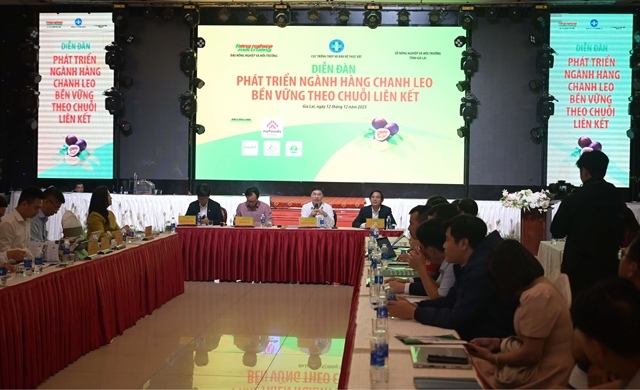MoIT’s solar power PPA circular omits vital details
MoIT’s solar power PPA circular omits vital details
Issues related to commercial operation dates, feed-in-tariffs, and grid connections are addressed in a newly-released circular on solar power, but international organisations and investors said that some key points were not changed.

The Ministry of Industry and Trade’s (MoIT) Circular No.16/2017/TT-BCT on project development and model power purchase agreements (PPAs) for solar power projects, released last week, reinstates Decision No.11/2017/QD-TTg on mechanisms for encouraging the development of solar power in Vietnam’s approved feed-in-tariff (FiT) rate of 9.35 US cents per kilowatt-hour (kWh) for grid-connected solar farms, exclusive of VAT.
Duane Morris Vietnam LLC’s general director Oliver Massmann remarked “this is consistent with what is stipulated in Decision 11.”
The circular stipulates, “The FiT for the following year shall be adjusted according to the central exchange rates of the Vietnamese dong against the US dollar announced by the State Bank of Vietnam on the last working day of the preceding year.”
The provided tariffs apply only to solar power plants that reach their commercial operation dates (COD) before June 30, 2019, and their application will be limited to a period of 20 years from the COD, according to the circular.
Law firm Baker & McKenzie noted that the model PPA does not include any escalation provisions by reference to an index, such as a consumer price index, to take into account that the cost of operating a project may increase over time because of inflation or the increased cost of labour and materials.
John Rockhold, executive director of AmCham Vietnam and head of the Vietnam Business Forum (VBF) Power and Energy Working Group, told VIR, “There are a few minor improvements such as COD, rewording of FiT, and grid connection.”
Still, according to Rockhold, the top five critical issues identified by VBF were not improved upon in the final version of the PPA. Issues which need to be addressed include interruption in the operation of receipt and purchase of power, force majeure conditions, contract suspension, settlement of disputes, and applicable laws.
Under Decision 11 and the model PPA, Electricity of Vietnam (EVN) or its authorised member entity (as the offtaker) would be responsible for purchasing the entire power output from grid-connected projects at the FiT at the delivery point.
However, the model PPA fails to adopt the concept of deemed energy charges/ deemed commissioning to allow for certain payments if the facility or a section is ready but EVN fails to construct grid connection or is otherwise unable to take the electricity produced. This leaves uncertainties as to whether the seller can be able to cover certain fixed costs (including debt service and fixed operating costs) as well as some return on equity in those circumstances. “It is quite risky for the producer if the output is ready to be fed to the grid but the connection is not available to do so. Absent a clear indication of whether the PPA is a ‘take or pay” agreement, investors will find it difficult to secure and ensure the profits and revenue of their projects,” Massmann told VIR.
Rockhold said that VBF can provide commercial, financing, and market analysis, essential to the government’s plan to attract $12 billion for solar power. “It is clear that this solar PPA will be okay for the few donor solar projects that enjoy soft loans and government guarantees. But the many private solar projects added to the master plan will have trouble in attracting investors and money with such risks. They can always go to other ASEAN members and get better solar investment conditions,” he added
Baker & McKenzie points out that the model PPA under Circular 16 does not address lenders’ rights to step in. A concerning omission is not giving the seller’s lenders the right to receive notice of any default by the seller and any additional period in which to cure such default in case of the seller’s failure to comply with the terms of the PPA or the financing arrangements.
The previous draft of the circular included some basic provisions in relation to these rights of lenders. The model PPA also does not include any provision on separate direct PPA agreements between EVN (or the government) and the lenders.
“Under the model PPA, the PPA is subject to Vietnamese laws. Currently, the model PPA does not specifically provide for offshore arbitration in a neutral location under rules generally acceptable to the international community,” the law firm stated.
“We note that, in addition to the resolution of disputes by the Electricity Regulatory Authority, the model PPA adds another option, namely ‘another dispute resolution body to be agreed by the parties’. This can create a possibility for the seller to negotiate with EVN for other avenues of dispute resolution, including offshore or international arbitration,” it said.
“There is an increasing interest of foreign investors in the sector, proven by the fact that there are many solar projects with total capacity of 10,000 MW registered with MoIT. However, not many of them have submitted the pre-feasibility study to MoIT for consideration,” Massmann said.
He added there are many reasons behind this, but the most important ones are the lack of government guarantee of EVN’s payment obligation in the PPA and currency hedging. Thus, the government should consider a mechanism where EVN has to fulfill its payment obligation and the investors are ensured that they will be able to remit their profits abroad in foreign currency.




















